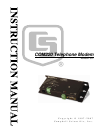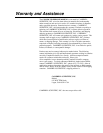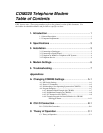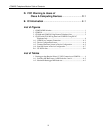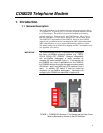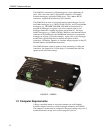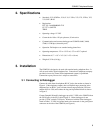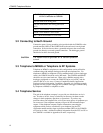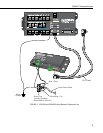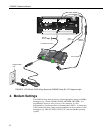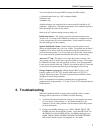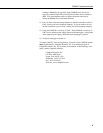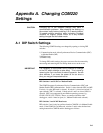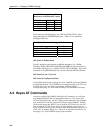
COM220 Telephone Modem
2. Specifications
• Standards: V.92, K56Flex, V.90, V.34, V.32bis, V32, V23, V22bis, V22,
V.21, B212, B103
• Registration:
FCC US: 3A4M508BSM2-T-W
IC 2377 A-SM2TW
TBR21
• Operating voltage: 12 VDC
• Current drain: 100 to 120 µA quiescent; 30 mA active
• Communication rate between datalogger and COM220: 9600, 38400,
57600, 115200 bps (selected by user)
• Operation: Full-duplex over standard analog phone lines
• Operating temperature: -25° to +50°C std, -55° to +85°C optional
• Dimensions: 6.5” x 1.0” x 2.6” (16.5 x 2.5 x 6.6 cm)
• Weight: 0.35 lbs (0.16 kg)
3. Installation
The COM220 is designed to be used with standard analog telephone lines. It
will not work with a digital telephone line. Connection to telephone-company-
provided coin service (central office implemented systems) is prohibited.
Connection to party line service is subject to state tariffs.
3.1 Connecting to Datalogger
Connect the cable from the telephone RJ11C jack to the modem as shown in
Figure 4. If the telephone company has not installed surge protection in the
telephone line (no RJ11C jack), one must install surge protection (CSI item
number 6362 or 4330) and connect the ring and tip terminal blocks as shown
in Figure 3.
Current Campbell Scientific dataloggers provide 12 VDC to the COM220 from
the CS I/O port via the SC12 cable (Figure 2). Older dataloggers do not
provide 12 VDC on their CS I/O port. When used with the older dataloggers
listed in Table1, 12 VDC and ground need to be connected via the green power
connector on the side of the COM220 (see Figure 4).
3



